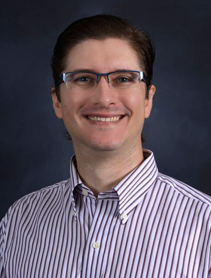
Dr. Aaron Wade
- Position: Associate Professor
- Department: Physics
- Office Location: Building 58, Room 006
- awade1@uwf.edu
- Campus: 850.857.6140
- Personal UWF Website
Biography
Dr. Aaron Wade received a Ph.D. in Physics from Florida State University, where he wrote his dissertation on “Quantum Cascade Lasers in High Magnetic Fields.” He is a UWF grad as well, earning a B.S. in Physics. Before joining UWF’s faculty he was a Post-Doctoral Fellow at the University of Cincinnati, where he concentrated on opto-electronics characterization of nano-devices.
Part of his research focuses on the effectiveness of different learning methods and environments in optimizing student learning. Wade’s publications have discussed valence band structure and two photon absorption, magnetic field-controlled sub-THz Quantum Cascade Laser, quantum efficiency, electron scattering spectroscopy, and ways to better engage students in understanding physics. Publications carrying his work include Applied Physics Letters, International Journal of Modern Physics, Physics Review B, Physics Review A, Nature Photonics, and the Journal of Computing Sciences in Colleges. Wade is President and Founder of the West Florida Chapter of Women in Science and a Founding Member and Director of Future Physicists of Florida.
Degrees & Institutions
Ph.D. Physics, Florida State University
B.S. Physics, University of West Florida
Research
In Physics Education Research I look into the effectiveness of different learning methods and environments in order to optimize student learning gains. I am also interested in the aversion middle and high school students have to Physics and STEM. At the department level, I have customized and implemented the SCALE-UP teaching method for both a “traditional” textbook (Knight) and a “principle’s first” textbook (M&I). I have formed an organization called the “Future Physicists of Florida” with colleagues from FSU and FAMU in order to encourage students to be STEM ready for collage. In addition, we want to break the stigma of physicists becoming high school teachers by encouraging the use of Learning Assistants. Lastly, my colleagues and I have created “Discovery Spot” a place for middle and high school students to go to explore STEM+C through exciting hands-on activities that we developed, which are rooted in researched teaching methods. We have done this in an effort to make STEM+C more accessible to the middle and high school community, and to study activities that encourage young students to not be afraid of Physics and educate parents what it means to be STEM ready for College. The properties of monolayer films are studied using a Langmuir trough. Samples and devices are fabricated using a bottom-up method either through spin-coating, thermal deposition, and/or Langmuir-Blodgettry. The material properties are explored by investigating the phase diagram of the 2D system at an air-water interface. Deposited samples and devices are characterized using XRD, dielectric/capacitance and transport measurements, and through optical spectroscopy and microscopy.
Current Courses
- Modern Physics I
- University Physics I
- University Physics II Lab
Classes Taught
- University Physics I & II with Lab
- Modern Physics I & II
- Intermediate and Advanced Lab
- Undergraduate Research
Publications
Publications carrying his work include Applied Physics Letters, International Journal of Modern Physics, Physics Review B, Physics Review A, Nature Photonics, and the Journal of Computing Sciences in Colleges.
Keywords: quantum cascade lasers, opto-electronics characterization of nano-devices, optimizing student learning in physics, valence band structure, magnetic field-controlled sub-THz Quantum Cascade Laser, quantum efficiency, electron scattering spectroscopy, West Florida Chapter of Women in Science


